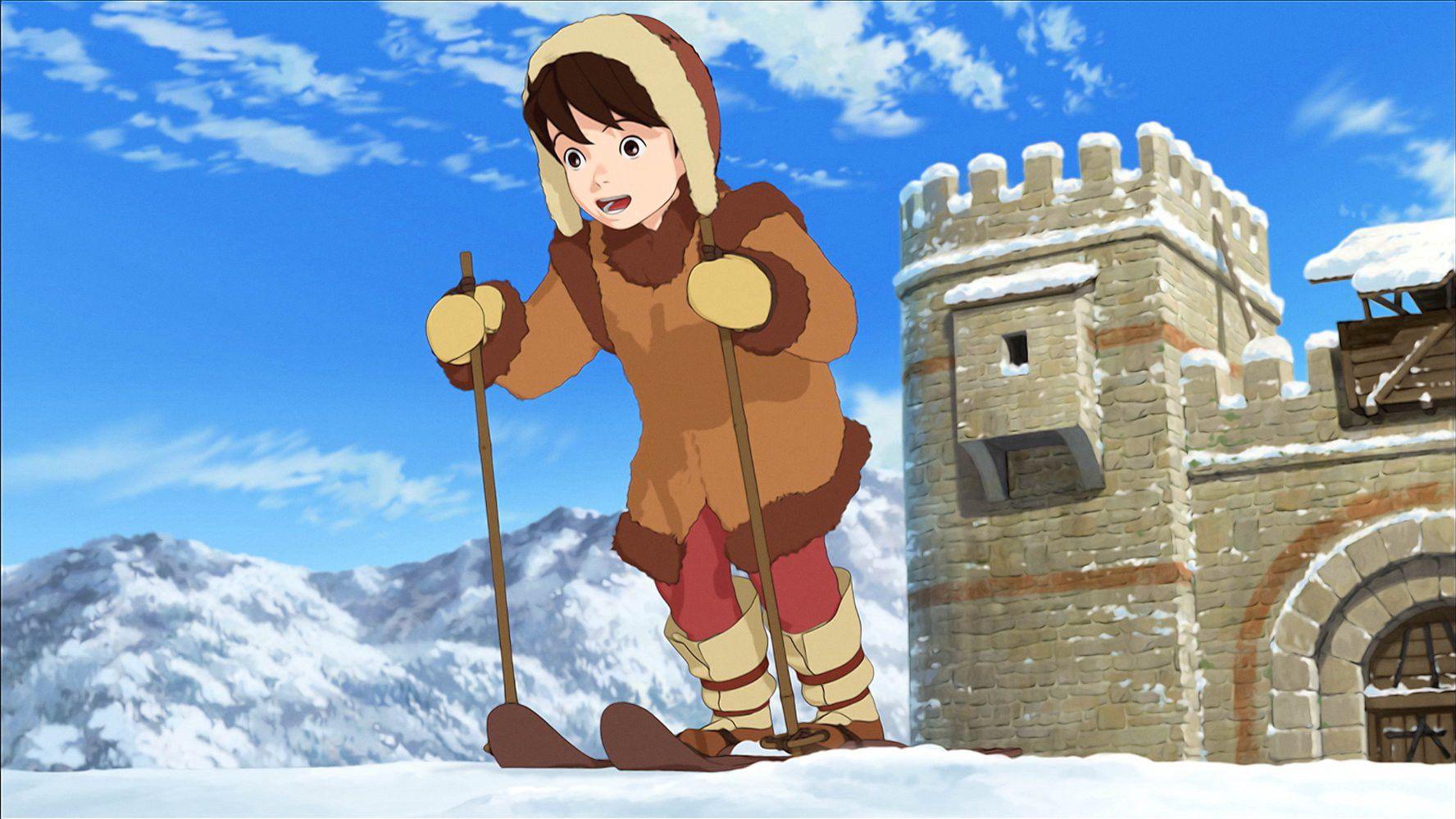In December, a clip of beloved Japanese animator Hayao Miyazaki made the rounds. The footage, pulled from an NHK television special called The Man Who Is Not Done, shows Miyazaki in a meeting at his Studio Ghibli, the renowned Japanese animation house that produced films such as Spirited Away, Princess Mononoke, and My Neighbor Totoro.
The bit of the meeting shown in the brief footage is led by Nobuo Kawakami, chairman of the Japanese media company Dwango. Kawakami presents a technically advanced CG animation of deformed zombies, rendered grotesque and glitchy by design and produced entirely by AI software developed by Dwango’s Artificial Intelligence Laboratory. Lacking proper limbs, the wet corpses barrel along the floor by their rib cages, utilizing an elbow or two as feet. “It looks like it’s dancing,” Kawakami says proudly.
As Miyazaki watches, he crosses his arms and scowls. On the big screen at the head of the room, he does not see innovation, but rather a regression of ethics. “Whoever creates this stuff has no idea what pain is whatsoever,” Miyazaki tells Kawakami. “I am utterly disgusted.”
Many fans of Miyazaki are well acquainted with the 76-year-old director’s propensity for contempt. A chain-smoking curmudgeon who is often jokingly said to loathe his own genre, Miyazaki would, at least in theory, enjoy some relief from such meetings in retirement, which he declared in 2013 and has predictably failed to honor ever since — though Studio Ghibli has recently made some strides in its attempt to map a succession plan. In the past couple of weeks, Studio Ghibli has released two new projects in the U.S., neither of which is directed or produced by Miyazaki. The Red Turtle, a film directed by Dutch animator Michael Dudok de Wit, debuted in U.S. theaters on January 20. Ronja, the Robber’s Daughter, a CG-animated TV series directed by Hayao Miyazaki’s son, Goro, premieres in the U.S. on Amazon on Friday. Both projects are notable for how sharply they differ from Miyazaki’s aesthetics, the very foundation upon which Studio Ghibli was built and from which its international regard extends.
Unlike the 2013 documentary The Kingdom of Dreams and Madness — which follows Studio Ghibli cofounders Miyazaki, Isao Takahata, and Toshio Suzuki during production of The Wind Rises and The Tale of the Princess Kaguya — The Man Who Is Not Done is largely about Miyazaki’s return from retirement to direct the forthcoming Boro the Caterpillar. Miyazaki’s work ethic and singularity of vision are among his most famous qualities, and so many fans of the director have always doubted that Miyazaki would ever leave his beloved Studio Ghibli in a successor’s hands for long. Industry critics and animation obsessives have long sought “the next Miyazaki,” a prayer for a reliably exciting new feature-film animator as much as a wish for a next-gen artist who might prove to be as globally captivating and commercially successful as Miyazaki.
It’s been a long and largely hopeless recruitment, if only due to the unspoken insistence that Miyazaki’s successor, regardless of studio, should make films in a similar style. With Miyazaki still practically retired, however, director Makoto Shinkai, the star animator at CoMix Wave Films, has spent the past year in Japan’s animator spotlight. His acclaimed 2016 film Your Name quickly overtook Miyazaki’s Spirited Away, released in 2001, as the highest-grossing anime film of all time. For the first time, one of Miyazaki’s successors managed to outdo him at the global box office, a feat that suggests that filmgoers might finally embrace a new director standing in Miyazaki’s old glow.
But Shinkai did not earn an Oscar nomination for Best Animated Feature this year. Instead, the honor went to Studio Ghibli’s The Red Turtle, directed by the European de Wit. The Red Turtle is the first Ghibli film ever helmed by a non-Japanese animator. Naturally, The Red Turtle is a totally atypical Ghibli production, bearing none of the studio’s signature qualities. For one, the film is silent: Unlike Studio Ghibli’s many wild and whimsical mythologies, The Red Turtle is a sparse fable about mankind’s relationship with the earth. The characters bear no names. While Ghibli’s house style of character animation underscores youth and exuberance, de Wit impresses the imagination with his superfine island landscapes and naturalistic detail in his sketches of humans and tortoises alike.
It’s a stylistic departure so stark, and an import so foreign, that you’d be forgiven for assuming that the production was a minor side quest for Studio Ghibli. But it isn’t. For two months this past summer, the studio hosted a massively popular Ghibli Expo in Roppongi Hills, dedicating a sizable chunk of the Tokyo City View Observation Deck to displaying The Red Turtle’s concept art and animatics spread across several walls at the exhibition’s entrance. It’s already a crown jewel in Ghibli’s legacy and, now, an Oscar nominee. And yet The Red Turtle — produced with no involvement or oversight from Miyazaki — is like no other Ghibli film that came before it.
On Friday, Studio Ghibli launched Goro Miyazaki’s anime TV project to U.S. audiences. Having recently launched its new Anime Strike channel, Amazon Video has acquired exclusive U.S. streaming rights for the studio’s first TV series, Ronja, the Robber’s Daughter. The TV series is an adaptation of Swedish author Astrid Lindgren’s classic novel about the young daughter of a clan of forest highway thieves. The source material is familiar territory for Studio Ghibli — after Howl’s Moving Castle in 2004 and Tales From Earthsea in 2006, Ronja is the studio’s third adaption of a Western fantasy novel — but Ronja is a somewhat unsettling and, frankly, inferior production in terms of look and feel. While it’s hardly as jarring as the animatronic zombie porn to which Hayao Miyazaki took such great offense, the CG character-animation style of Ronja resembles cutesy, superfluid, tot-sized video game CG more than any classic Studio Ghibli works.

Much like The Red Turtle, Ronja is a considerable departure from Ghibli’s house style, a stark innovative gesture from a studio largely defined by nostalgia and artisanal convention. Ronja is childish and sentimental like other Ghibli projects but — as a 26-episode TV series — it is so tedious as to defy wonderment. And as a CG spectacle, it is technically smooth but intuitively off, a clash of classic backgrounds and digital rhythms.
Although The Red Turtle is a gorgeous film, full of fine details drawn across intimidating landscapes, it is also one that carries a very different sort of story than your typical Ghibli movie. Meanwhile, Ronja is a traditional narrative — there’s a young girl protagonist who explores the rural, natural world — that is wed to perhaps the least Ghibli-fied medium imaginable: a CG television series. Neither Ronja nor The Red Turtle is quite what you’d expect the studio to produce. But as Hayao Miyazaki himself now dabbles in CG animation, a tech advancement that he once steeled himself against, the character of Studio Ghibli movies is bound to change very quickly and quite possibly spell the end of classic Ghibli as we know it.
For more than a decade now, Goro Miyazaki has been a reluctant heir to his father’s legacy and principles. He’s proved partial to CG animation over the years, but he’s hardly a master of the form, and so it seems his father’s hostility to CG, and his conservative adherence to hand-drawn animation techniques, may ultimately win out over the broader industry trends.
Ghibli’s goodwill is global, but the studio is relatively puny in its operational scale. (Toho distributes all Ghibli films in Japan, and Disney distributes the studio’s works internationally.) The studio’s independence affords its creators the luxury of protesting their industry’s innovative extremes, a last stand that’s become messy and thrilling as Ghibli’s aging founders seem to be winging it.
